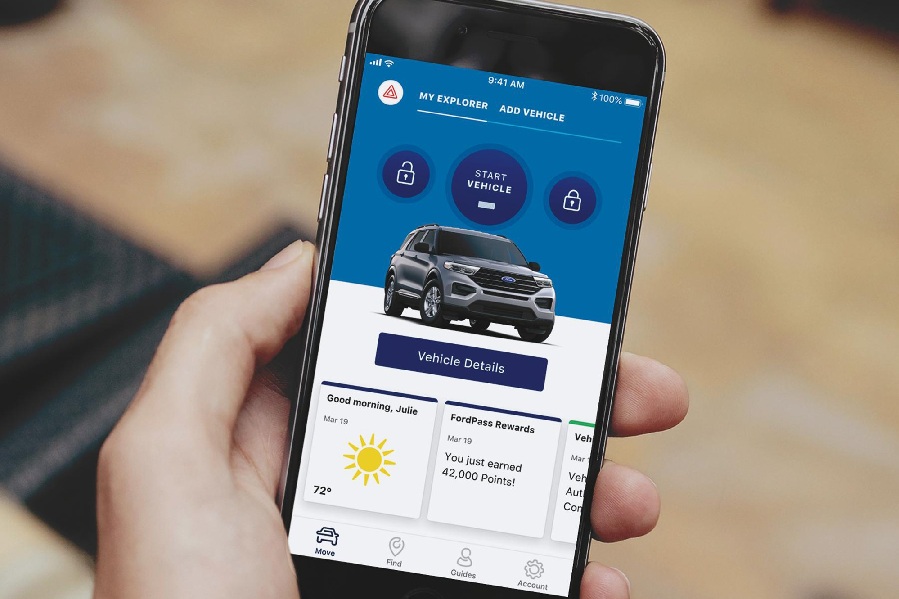F150 PowerBoost Full Hybrid V6: What Reverse Beeping Means
The Ford F150 PowerBoost Full Hybrid V6 is a revolutionary vehicle that combines the power of a traditional internal combustion engine with the efficiency of an electric motor. One of its notable features is the reverse beeping sound, which has garnered attention from owners and automotive enthusiasts. What is the PowerBoost Full Hybrid V6? Before … Continued
The Ford F150 PowerBoost Full Hybrid V6 is a revolutionary vehicle that combines the power of a traditional internal combustion engine with the efficiency of an electric motor. One of its notable features is the reverse beeping sound, which has garnered attention from owners and automotive enthusiasts.

What is the PowerBoost Full Hybrid V6?
Before we dive into the reverse beeping feature, let’s briefly discuss the PowerBoost Full Hybrid V6 engine:
- Engine type: 3.5L V6 engine combined with a 35-kilowatt electric motor
- Power output: 430 horsepower and 772 Newton-meters of torque
- Fuel efficiency: Approximately 9.8 L/100km combined (city/highway)
- Towing capacity: Up to 5,760 kg when properly equipped
This powerful hybrid system offers an impressive blend of performance and efficiency, making it a popular choice among F150 buyers.
The Reverse Beep Feature
Purpose and Functionality
The reverse beeping feature in the F150 PowerBoost Full Hybrid V6 serves a crucial safety function. Its primary purposes are:
- Pedestrian safety: To alert nearby pedestrians and other vulnerable road users when the vehicle backs up.
- Regulatory compliance: To meet federal safety regulations for hybrid and electric vehicles.
When the F150 PowerBoost is in reverse, it emits a distinct beeping sound. This sound is designed to be audible to those near the vehicle but not excessively loud or disruptive.
Technical Specifications
- Sound type: Medium-pitched beep
- Frequency: Approximately one beep per second
- Volume: Designed to be audible within a 3-meter radius of the vehicle
- Activation: Automatic when shifted into reverse gear
Regulatory Background
The reverse beeping feature is not unique to the F150 PowerBoost but is part of a broader regulatory framework for hybrid and electric vehicles. In 2018, the U.S. National Highway Traffic Safety Administration (NHTSA) mandated that all hybrid and electric vehicles must produce artificial sounds when travelling at low speeds or in reverse.
This regulation, known as Federal Motor Vehicle Safety Standard No. 141, aims to address the increased risk of pedestrian collisions with these quieter vehicles. The F150 PowerBoost’s reverse beeping is an implementation of this safety standard.
Owner Experiences and Discussions
The reverse beeping feature has been a topic of discussion among F150 PowerBoost owners. Opinions on the feature are diverse:
Positive Feedback
Many owners appreciate the safety aspect of the feature:
- “It gives me peace of mind when backing up in crowded areas.”
- “I’ve noticed pedestrians are more aware of my truck in parking lots.”
Potential Modifications and Legal Implications
Some F150 PowerBoost owners have inquired about modifying or turning off the reverse beeping feature. It’s crucial to note that:
- Tampering with safety features may void the vehicle’s warranty.
- Turning off the feature could make the vehicle non-compliant with federal safety regulations.
- In the event of an accident, liability issues could arise if the safety feature has been turned off.
Ford does not officially endorse or support any modifications to this safety feature. Owners considering changes should carefully weigh the potential risks and legal implications.
The Future of Vehicle Alert Sounds
As electric and hybrid vehicles become more prevalent, the conversation around artificial vehicle sounds is evolving. Future developments may include:
- Adaptive volume: Systems that adjust the alert volume based on ambient noise levels.
- Directional sound: Technology that focuses the alert sound in the direction of travel.
- Customizable sounds: Allowing owners to choose from a range of approved alert sounds.
While these features aren’t currently available for the F150 PowerBoost, they represent potential future enhancements to vehicle safety systems.
Impact on Resale Value
The reverse beeping feature, as a standard safety feature, does not negatively impact the resale value of the F150 PowerBoost. As safety features become increasingly important to buyers, it may be a positive attribute.
Current market data shows that well-maintained F150 PowerBoost models with all safety features intact tend to retain their value well. As of 2025, a three-year-old F150 PowerBoost typically retains about 70-75% of its original value, which is strong for the full-size truck segment.
Environmental Impact
While the reverse beeping feature itself doesn’t have a direct environmental impact, it’s part of the broader shift towards hybrid and electric vehicles, which do offer significant environmental benefits:
- Reduced emissions: The F150 PowerBoost produces fewer emissions than traditional gas-only F150 models.
- Improved fuel efficiency: The hybrid system can significantly reduce fuel consumption, especially in city driving.
- Noise pollution: While the reverse beeping adds some noise, the hybrid system’s overall operation is quieter than traditional engines, potentially reducing noise pollution in urban areas.
Tips for F150 PowerBoost Owners
If you own or are considering purchasing an F150 PowerBoost, here are some tips related to the reverse beeping feature:
- Familiarize yourself with the sound to recognize it in various environments.
- Be aware that pedestrians may react differently to the sound than traditional engine noise.
- Maintain the sensors and related systems to ensure the feature functions correctly.
- If you find the sound disruptive, consider speaking with your Ford dealer about any available adjustments within safety regulations.
- Remember that the feature is for safety, so try to view it as a helpful tool rather than an annoyance.
Ford F150 Powerboost Hull Hybrid: Safety First
The reverse beeping feature of the Ford F150 PowerBoost Full Hybrid V6 is more than just a sound—it’s a crucial safety feature designed to protect pedestrians and comply with federal regulations. While it has sparked discussions and some concerns among owners, it represents an important step in the evolution of vehicle safety systems.
As hybrid and electric vehicles become more common on our roads, features like reverse beeping will likely become standard across all vehicle types. The F150 PowerBoost’s implementation of this feature demonstrates the Ford commitment to safety and regulatory compliance.
Understanding this feature’s purpose, functionality, and broader context can help current and prospective F150 PowerBoost owners appreciate the vehicle’s advanced safety systems more. As automotive technology continues to evolve, we can expect further refinements and innovations in how vehicles communicate their presence to the world around them.


